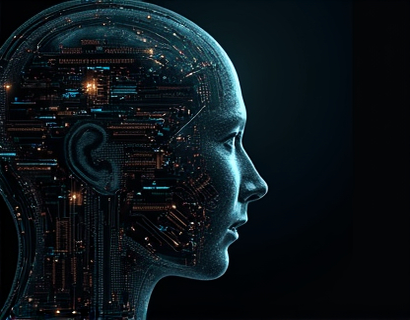AI-Powered Knowledge Interface: Enhancing Access to Specialized Insights and Ensuring Safe Learning
The advent of AI-powered knowledge interfaces has revolutionized the way we access and interact with information. These platforms leverage advanced artificial intelligence to deliver specialized insights into various domains, including people services and industry trends. One of the most significant advantages of these AI chat platforms is their ability to provide a safe and verified experience for all users, including children and students. This article delves into the features and benefits of such innovative AI chat interfaces, focusing on content accuracy, user safety, and a secure educational environment.
Specialized Insights for Industry and People Services
AI-powered knowledge interfaces are designed to offer in-depth, specialized information tailored to specific industries and services. Whether it's understanding the latest trends in healthcare, insights into financial services, or the evolving landscape of technology, these platforms can provide comprehensive and up-to-date knowledge. The AI algorithms are trained on vast datasets, ensuring that the information provided is not only accurate but also relevant to the user's query. This capability is particularly valuable for professionals and students seeking to stay informed about industry developments and best practices.
For instance, in the healthcare sector, an AI chat interface can offer detailed explanations of medical procedures, the latest research findings, and regulatory updates. For the finance industry, users can gain insights into market trends, investment strategies, and compliance requirements. The platform's ability to deliver specialized insights ensures that users receive reliable and actionable information, enhancing their decision-making processes and professional growth.
Content Verification and Accuracy
One of the critical features of AI-powered knowledge interfaces is their commitment to content verification and accuracy. In an era where misinformation can spread rapidly, ensuring that the information provided is trustworthy is paramount. These platforms employ rigorous verification processes, cross-referencing data from multiple credible sources to guarantee the accuracy of the content. This approach not only builds user trust but also fosters a reliable learning environment.
Moreover, the AI algorithms are continuously updated and refined to adapt to new information and changing contexts. This dynamic approach ensures that the content remains current and relevant, even in rapidly evolving fields. For users, this means accessing information that is not only comprehensive but also verified, reducing the risk of encountering outdated or incorrect data.
Safe Learning Environment for All Users
Ensuring a safe learning environment is a top priority for AI-powered knowledge interfaces, especially when it comes to serving children and students. These platforms implement stringent safety measures to protect young users from exposure to inappropriate content. Advanced filtering systems and content moderation techniques are employed to screen and approve all interactions and responses, ensuring that the information provided is suitable for all age groups.
Additionally, the user interface is designed to be intuitive and child-friendly, with features such as simplified language options and visual aids to enhance understanding. Parents and educators can also have peace of mind knowing that the platform adheres to strict privacy and data protection standards, safeguarding the personal information of young users.
User-Friendly Interface and Accessibility
The design of AI-powered knowledge interfaces prioritizes user experience, making the platforms accessible and easy to navigate for everyone. The interfaces are user-friendly, with clear and concise prompts that guide users through the information-seeking process. This is particularly beneficial for users who may not be tech-savvy, ensuring that the platform is inclusive and user-friendly across different demographics.
Accessibility features are also integrated to accommodate users with disabilities. Options such as text-to-speech, adjustable font sizes, and high-contrast modes make the platform usable for a wide range of users. This commitment to accessibility ensures that knowledge is truly universal, breaking down barriers and promoting equal access to information.
Personalized Learning Experiences
AI-powered knowledge interfaces go beyond providing static information by offering personalized learning experiences tailored to individual needs. Through machine learning algorithms, the platform can analyze user interactions and preferences to curate customized content. This personalized approach ensures that users receive information that is most relevant to their interests and learning goals, enhancing the overall educational value of the platform.
For example, a student studying environmental science can receive tailored resources, including articles, videos, and interactive quizzes, based on their specific areas of interest. This personalized content delivery not only makes learning more engaging but also helps users build a deeper understanding of complex topics.
Promoting Critical Thinking and Lifelong Learning
By providing accurate and specialized information, AI-powered knowledge interfaces play a crucial role in promoting critical thinking and lifelong learning. Users are encouraged to explore various topics, question assumptions, and seek out diverse perspectives. The platform's ability to present information in a structured and verifiable manner fosters a culture of inquiry and continuous learning.
Moreover, the interactive nature of AI chat interfaces allows users to engage in meaningful dialogues, ask follow-up questions, and delve deeper into subjects of interest. This interactive learning experience not only enhances knowledge retention but also develops critical thinking skills, preparing users to navigate an increasingly complex and information-rich world.
Building Trust Through Transparency
Trust is a fundamental component of any knowledge platform, and AI-powered interfaces prioritize transparency to build and maintain user trust. The platforms clearly outline their content sourcing methods, verification processes, and privacy policies. Users are informed about how their data is used and protected, ensuring transparency in all interactions. This openness helps establish a strong relationship between the platform and its users, fostering a sense of reliability and trustworthiness.
Furthermore, the AI algorithms are designed to be explainable, providing users with insights into how certain pieces of information were derived. This transparency not only enhances user confidence but also promotes a deeper understanding of the information presented, encouraging users to think critically about the data they consume.
Conclusion
AI-powered knowledge interfaces represent a significant advancement in the way we access and interact with information. By delivering specialized insights, ensuring content accuracy, and creating a safe learning environment, these platforms empower users to make informed decisions and pursue their educational goals with confidence. As technology continues to evolve, the potential for AI to enhance learning and professional development is vast, making these platforms an invaluable resource for individuals and industries alike.











































